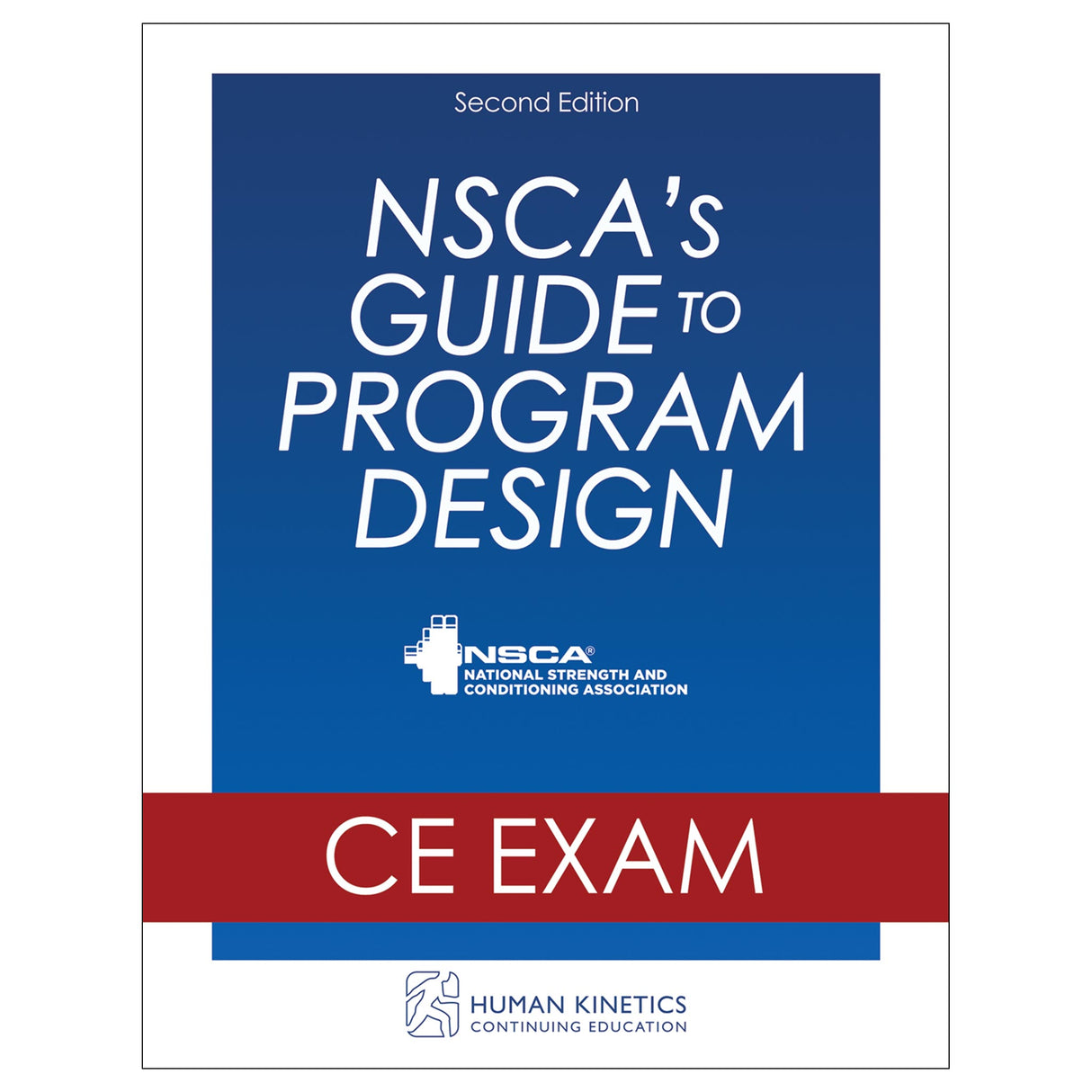NSCA's Guide to Program Design 2nd Edition Online CE Exam Without Book
Author: Human Kinetics
$119.95 CAD
Human Kinetics strongly recommends that you complete your exam within the calendar year of your date of purchase to ensure approved credits do not expire for your organization.
Consisting of 100 multiple-choice and true-false questions, this continuing education exam is designed to be taken after reading NSCA's Guide to Program Design, Second Edition. The exam will test your knowledge of the information presented in the book so you can assess an athlete and design a scientifically based training program.
Once you pass the exam, you can print a certificate for continuing education credits.
Learning Objectives
- Create sport- and position-specific strength and conditioning programs by assessing athlete needs to optimize health, improve performance, and reduce injury risk.
- Build evidence-based programs using quantitative assessments and sport-specific profiles to set goals, evaluate effectiveness, and support development.
- Include a well-designed warm-up in every practice and competition to prepare athletes, enhance performance, and set the tone for activities.
- Design resistance training programs to boost strength, power, endurance, and performance while adapting to athlete progress and needs.
- Increase muscle power by implementing advanced techniques in strength and conditioning programs.
- Name some of the neuromuscular, metabolic, and cardiovascular adaptations that occur with anaerobic conditioning.
- Explain how physiology, exercise economy, performance psychology, and lifestyle affect aerobic endurance performance.
- Develop agility by enhancing speed, movement technique, muscular strength, and acceleration ability.
- Implement speed training programs to optimize high-velocity movement by focusing on factors such as the stretch-shortening cycle and muscular strength.
- Design core training programs that emphasize trunk stabilization, performance improvement, balance, and injury reduction.
- Apply periodization principles to develop training programs and align cycles with individual athlete needs.
- Incorporate sport-specific periodization plans to enhance performance and recovery.





